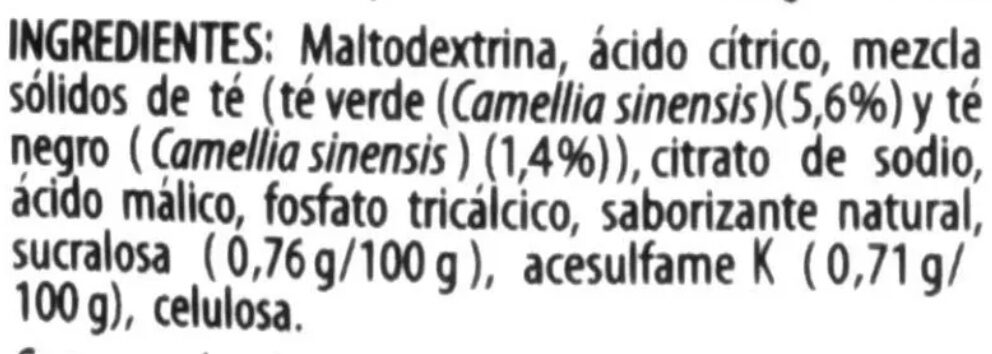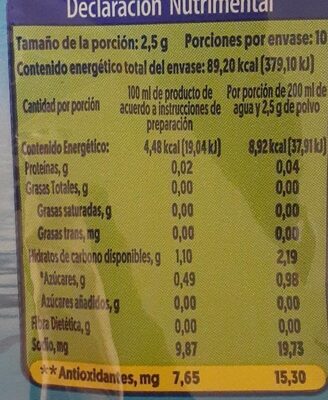Té Verde en Polvo Nestea sabor limón - 25 g
This product page is not complete. You can help to complete it by editing it and adding more data from the photos we have, or by taking more photos using the app for Android or iPhone/iPad. Thank you!
×
Barcode: 7501000911974 (EAN / EAN-13)
Quantity: 25 g
Brands: Nestea
Categories: Plant-based foods and beverages, Beverages, Hot beverages, Plant-based beverages, Teas, Instant beverages
Matching with your preferences
Environment
Carbon footprint
Packaging
Transportation
Report a problem
Data sources
Product added on by elcoco
Last edit of product page on by martini101.
Product page also edited by elcoco.c875911d8623720f24e0267704e5b1fd, kiliweb, openfoodfacts-contributors, scanbot, sebleouf, thaialagata, yuka.sY2b0xO6T85zoF3NwEKvlhZ1UYbDuT_6bAfQulO62fDRE8PFMdIuxIToLqg, yuka.sY2b0xO6T85zoF3NwEKvlm0dUfeEjzD9OEXjxBaG6fKkKbXBef5-u6T-b6o.
If the data is incomplete or incorrect, you can complete or correct it by editing this page.








